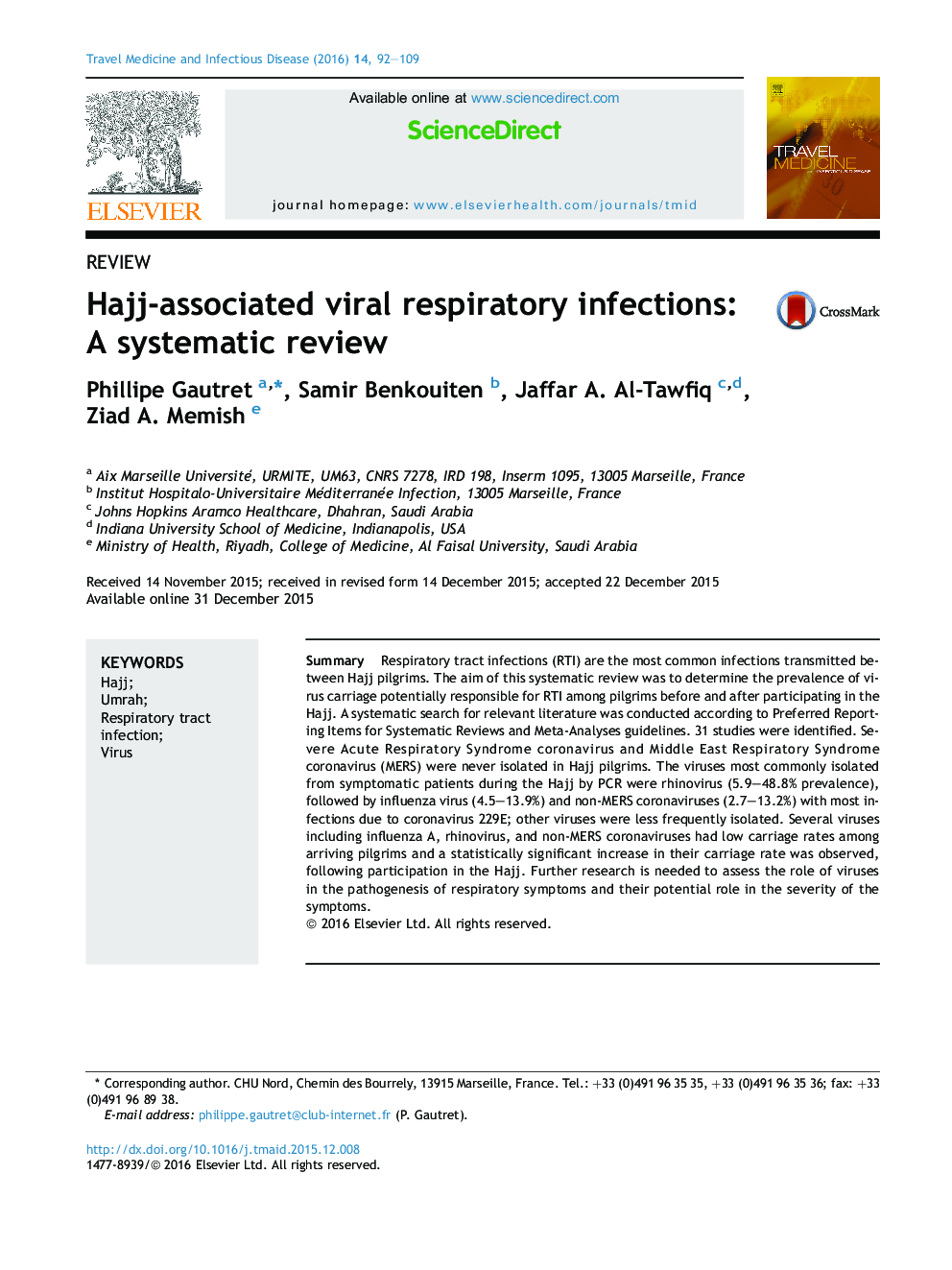| Article ID | Journal | Published Year | Pages | File Type |
|---|---|---|---|---|
| 3392733 | Travel Medicine and Infectious Disease | 2016 | 18 Pages |
SummaryRespiratory tract infections (RTI) are the most common infections transmitted between Hajj pilgrims. The aim of this systematic review was to determine the prevalence of virus carriage potentially responsible for RTI among pilgrims before and after participating in the Hajj. A systematic search for relevant literature was conducted according to Preferred Reporting Items for Systematic Reviews and Meta-Analyses guidelines. 31 studies were identified. Severe Acute Respiratory Syndrome coronavirus and Middle East Respiratory Syndrome coronavirus (MERS) were never isolated in Hajj pilgrims. The viruses most commonly isolated from symptomatic patients during the Hajj by PCR were rhinovirus (5.9–48.8% prevalence), followed by influenza virus (4.5–13.9%) and non-MERS coronaviruses (2.7–13.2%) with most infections due to coronavirus 229E; other viruses were less frequently isolated. Several viruses including influenza A, rhinovirus, and non-MERS coronaviruses had low carriage rates among arriving pilgrims and a statistically significant increase in their carriage rate was observed, following participation in the Hajj. Further research is needed to assess the role of viruses in the pathogenesis of respiratory symptoms and their potential role in the severity of the symptoms.
